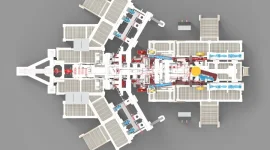- Views: 2K
- Replies: 28
In a significant shift in naval strategy, the Indian Ministry of Defence (MoD) has chosen to prioritize the expansion of its nuclear submarine fleet over the acquisition of a third aircraft carrier. This decision reflects a renewed focus on stealth, deterrence, and the evolving nature of maritime security threats, particularly in the Indo-Pacific region.
Amidst growing regional tensions and China's increasing naval presence, India is reassessing its defence priorities. The Indian Navy recognizes the need for a balanced force structure capable of addressing a wide range of challenges. Nuclear submarines, with their inherent stealth and extended operational endurance, have emerged as a key component of this evolving strategy.
Both attack submarines (SSNs) and ballistic missile submarines (SSBNs) offer unique capabilities. SSNs provide a potent underwater strike capability, while SSBNs, armed with nuclear-tipped missiles, form the bedrock of India's nuclear deterrence. This aligns with India's "no first use" nuclear policy, where survivable second-strike capabilities are paramount.
Compared to aircraft carriers, which are high-value targets and require extensive support infrastructure, submarines offer a more cost-effective and survivable means of projecting power. Modern advancements in anti-ship missiles and asymmetric warfare tactics have further underscored the vulnerability of surface vessels, making submarines an attractive option for maintaining a persistent and credible naval presence.
The Indian Navy plans to commission at least six new SSNs to enhance its operational capabilities. These submarines will enable India to conduct covert operations, gather intelligence, and project power far from its shores. Furthermore, the development of additional SSBNs, building upon the existing Arihant class, will bolster India's second-strike capability and strengthen its strategic deterrence posture.
This strategic shift towards an expanded nuclear submarine fleet highlights India's commitment to maintaining a credible and survivable deterrent in the face of evolving security challenges. By prioritizing stealth, endurance, and cost-effectiveness, India is building a naval force capable of safeguarding its maritime interests and contributing to regional stability.


